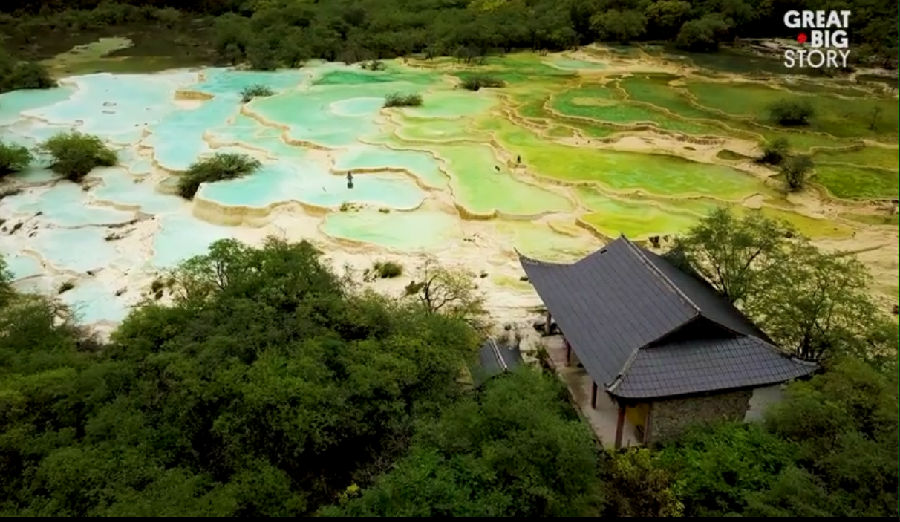In China's Huanglong Valley, you can find 2.2 miles of naturally formed hot springs,
在中国的黄龙沟,人们可以看到绵延2.2英里的自然温泉
just follow the yellow, calcified trail.
沿着黄龙沟的钙华滩流迤逦而下。
These colorful ponds have formed over 1,000 years by geologic change,
一千多年前,地质发生变化,
causing the limestone to mold and the crystal clear waters to overflow into the series of pools below.
石灰岩逐渐堆叠,清澈的泉水流入层层叠叠的石坑,便有了如今这些彩池。
On either side of this natural wonder are rugged mountains and forests.
在这一自然奇观的两侧,崎岖的山脉连绵起伏,森林密布。
From a distance, the cream yellow rock of the hot springs waves through the forest,
远远望去,温泉池里的钙华滩流沿着密林深处缓缓流淌,
standing out as a steamy oasis.
仿佛一片氤氲的绿洲。
The color and shape result in the locals calling the pools the Yellow Dragon.
由于这些水池的颜色和形状都酷似黄龙,当地人便称此地为“黄龙”。

Huanglong Valley is also home to the Huanglong Monastery,
黄龙寺是“黄龙沟”的另一景点,
and one of its remaining temples can be found at the top of the pools' terraces.
如今,该寺仍有一座神殿位于彩池顶部。
For many years, the area was under the threat of industrialization,
多年来,工业化一直威胁着该地的存在,
but through local efforts and being a UNESCO site,
然而,作为一处联合国物质文化遗产,加之当地人的努力,
the Yellow Dragon will be seen in its natural beauty for generations to come.
至少接下来的几代人依然有机会目睹黄龙的自然风采。











